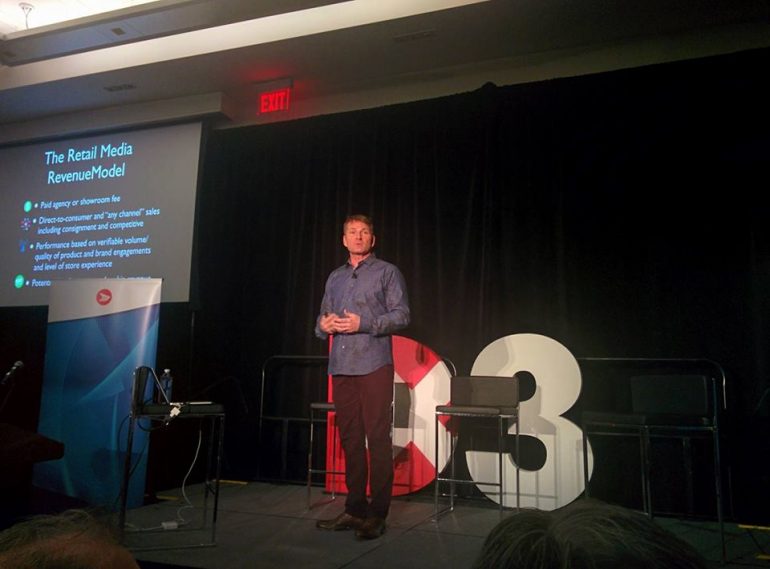“Retail is dead,” notable tech investor Marc Andreessen declared back in 2013. “Retail chains are an implausible economic structure.”
Despite being three years old, Andreessen’s statement is still a cause for anxiety among big box retail giants, who are re-examining their own ecommerce strategies amongst increasing sales declines. For Dx3’s day two keynote, Retail Prophet founder and president Doug Stephens focused on spreading the gospel of physical stores. Stephens believes that the physical stores will thrive once they embrace the next generation of the retail experience.
“I believe we are at the end of the beginning of ecommerce,” Stephens said, alluding to virtual reality platforms that mimic physical stores where users can shop. “We’ll have this ability to interact with a product and shop in a digital land. The Internet is becoming more physical in nature.”
In the past, big box stores have relied on a ‘purchasing funnel’ where marketing is on top, and brands control the messaging, until customers eventually purchase the product and the cycle repeats. With information on products widely available online and less attention paid to advertising, the traditional way of spreading a product’s message to consumers is disrupted.
“It’s the most inspired time in retail. It’s a level playing field, and every brand has an opportunity to be remarkable.”
– Doug Stephens
Brands are already suffering for their inability to adopt new models of retail; Sears continues to report store closures and declining sales, and RadioShack planned to sell or close 4,000 stores during its bankruptcy as more people buy online. Brands that don’t want to suffer the same fate should realize that people don’t just go to store to “acquire stuff” — people like to go shopping because it’s a fun way to get out in public and pass the time. To survive, brands need to get focused on building experiences.
“The opportunity we have is to turn stores into its own powerful media channel. It’s less about having a store and more about having a story; a story that’s articulated at every touch in the store,” Stephens said, using pop-up shops — like Lowes using Holorooms to help consumers visualize Lowes products in their homes — as an example.
“Amazon opened a bookstore if you can appreciate the irony of that,” Stephens joked. “I believe they recognize that you cannot fully actualize as a brand unless you build physical eye-to-eye connections and maybe an emotional bond from the consumer.”
"Physical stores are aimed to create an emotional bond with the consumer" by @RetailProphet #retail #future pic.twitter.com/Kv67BeV0IO
— Facelet (@WeAreFacelet) March 3, 2016
And as the retail experience becomes more modernized, so too will a brand’s measure of success. The go-to metric for success is normally how many products are sold, but in the future, retail metrics will more closely mimic those of ecommerce stores, such as bounce rate, demographics, and the amount of people coming in and out of the store.
And as Amazon patents ‘anticipatory shipping’ where it predicts what customers want to buy before they even know they’re buying it, Stephens said that this doesn’t mean that we’re moving into a brave new world where ecommerce rules its consumers. He says it’s the first time in history that consumers are truly in control, and now, the retailers have to work hard to get their attention.
“We are not moving into some dystopic future; I don’t believe we’re moving into future where lights go out and everyone goes out of business and everyone buys from Amazon,” Stephens concluded. “It’s the most inspired time in retail. The beauty of today is it’s a level playing field, and every brand has an opportunity to be remarkable.”


